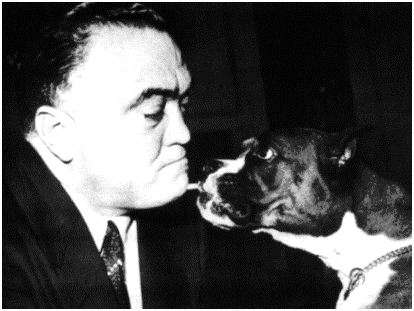Genius, Madness, and the
Mysteries of Syphilis
Deborah Hayden
(Basic)

The further back we go in time, the harder it is to be sure about some of these poxers. There's only secondary evidence in the case of Columbus. Contemporaries tell us that he was "badly overwrought, had visions, heard voices." But historians tell us that he had "typhus, rheumatic heart disease, or Reiter's Syndrome."
Indeed, there is still some controversy about whether the plague of syphilis that swept Europe at the end of the 15th Century came from what Columbus and his crewmembers brought back from Hispanola, or whether, coincidentally, a more virulent form of the pox had broken out from an earlier strain.
Syphilis --- it can be imagined --- was always blamed on the other guy. In Japan, it was called the "Canton rash."
In Russia it was the Polish sickness, Poland blamed it on the Germans, and the Germans called it "the Spanish itch," while the French and Italians blamed each other. Muslims blamed Christians. Catherine the Great of Russia blamed the Americas.
There was no cure for syphilis before 1910 --- and it wasn't until WWII that penicillin became the medicine of choice. Before that, the cure could kill you. Most commonly, doctors used mercury.
The syphilitic overdosed with mercury would experience unquenchable thirst even while producing gushing saliva measured in pints and quarts, often while being encased in a steam box daily for a month...A patient sat over a skillet under a cloak and inhaled the fumes.
The cure itself created "new ulceration, dermatological eruptions, paralysis, shaking, anorexia, gastric distress, diarrhea, nausea, and rotting and loosening of teeth."
Pox is packed with information, but since it is a one-subject study, there is a certain noisy echo. With --- for example --- Beethoven, we go through his letters, through letters of friends, speculation on where he might have contracted it (or if he contracted it at all), using all possible clues and contemporary accounts, which leads the author to state "Beethoven's changes in behavior were not inconsistent with early tertiary syphilis." Maybe yes, maybe no: but this case-by-case approach to the fifteen historical figures represented here means there is no little repetition.
 The most fascinating chapter, at least for this reader, is the one on Hitler --- possibly because there is much documentation in that it deals with the most recent figure. Even though Ms. Hayden concludes, "There is no definitive proof that Adolf Hitler had syphilis, any more than there is undeniable evidence that he did not," the evidence is tantalizing: Dr. Theo Morell's specialty, before he went to work for Hitler, was syphilis; fifteen pages in Mein Kampf are dedicated to ranting about the danger of the pox; some of the medicines Hitler was taking were specific for the disease, and there are countless hints in the diaries and reports left behind by his physicians and associates.
The most fascinating chapter, at least for this reader, is the one on Hitler --- possibly because there is much documentation in that it deals with the most recent figure. Even though Ms. Hayden concludes, "There is no definitive proof that Adolf Hitler had syphilis, any more than there is undeniable evidence that he did not," the evidence is tantalizing: Dr. Theo Morell's specialty, before he went to work for Hitler, was syphilis; fifteen pages in Mein Kampf are dedicated to ranting about the danger of the pox; some of the medicines Hitler was taking were specific for the disease, and there are countless hints in the diaries and reports left behind by his physicians and associates.
Mr. W. H.
Oscar Wilde
(Hesperus/Trafalgar Square)
For instance, the author tells us, the lines in sonnet 20, "A man in hew, all Hews in his controlling" refers to his sweetie --- "hew" referring to color of skin, but also a pun on "Hughes". "Thou art as fair in knowledge as in hew," has the same punning intent, and references to the "shadow" in sonnet 53 explicitly refer to the stage:
What is your substance, whereof are you made,
That millions of strange shadows on you tend?
Since every one hath, every one, one shade,
And you, but one, can every shadow lend.
(In simple English, as an actor, before an audience, Hughes became many persons).
Shakespeare himself enters into the poems by references to "Will:"
To make the weeper laugh, the laugher weep,
He had the dialect and different skill,
Catching all passions in his craft of will?"
...referring of course to Will Shakespeare and his craft --- that of playwright.
Then,
...dialogues for him what he would say,
Asked their own wills, and made their Wills obey....
Shakespeare's passion for this fair-haired young man forces him to bend his will, e.g., to do anything that this Hughes demanded of him.
Wilde writes,
Yes: the 'rose-cheeked Adonis' of the Venus poem, the false shepherd of the 'Lover's Complaint,' 'the tender churl', 'the beautous niggard' of the Sonnets, was none other but a young actor; and as I read through the various descriptions given to him, I saw that the love that Shakespeare bore him was as the love of a musician for some delicate instrument on which he delights to play...

However, as literature, Mr. W. H. does amble about. One is reminded of those devilishly boring scholarly papers that turn up in MLA and PMLA, for Shakespeare is a dream for literary nabobs who want to hang on to their teaching jobs at Redding State U. or Woonsocket Junior College. Since we know next to nothing about him and are left with the prolixity of his plays and poems, those would-be tenure types in English Departments world-wide have long found it possible to redesign him to fit their own miserable needs. Lit Major noodling may be god-sent for those instructors who have nothing better to do, but it's a nightmare for those of us who have some lingering affection for the master.
In fact, Shakespeare is a very convenient mirror. Wilde (and all others) can fill in the literary blanks, attributing anything that one may want to him. But like those of the neo-scholars, this volume is a foolish exercise at best and a bore at worst.
Narratives of Flight
In J. Edgar Hoover's
America
William Beverly
(University of Mississippi)
On the Lam calls for a seismic shift in thinking. And the actors that the scholar calls into play here --- J. Edgar Hoover, Richard Wright, John Dillinger, Robert E. Burns, Ralph Ellison, Jacques Lacan, O. J. Simpson, Robert E. Sherwood, Michel Foucault, Thelma & Louise --- are, to say the least, quite a mixed bag.
"The lam story is surely one of America's great minor genres," Beverly says, "but the fugitive has been too rarely discussed as a literary and cultural figure." The book, he explains, "will focus on the tensions between gestures of flight (the lam) and police pursuit (the manhunt) in American texts from the twenty years between 1932 and 1952." He uses as his criminal prototypes the Chicago gangster John Dillinger and Robert E. Burns, author of I Am a Fugitive from a Georgia Chain Gang! The authors he chooses to employ are Robert E. Sherwood, Ralph Ellison (The Invisible Man) and Richard Wright (Native Son). He also cites three movies, what we used to call B-movies (which he praises): They Live By Night, White Heat, and Gun Crazy.
 It's the chapters on J. Edgar Hoover and John Dillinger that are the most convincing, certainly the most enticing. The author sets much store by the fact that Hoover was born into a family of cartographers, working for the federal Coast and Geodetic Survey. Thus, he explains, the FBI grew immensely in power not only by Hoover's unending flair for publicity, but also his background in "cartography." Hoover's
It's the chapters on J. Edgar Hoover and John Dillinger that are the most convincing, certainly the most enticing. The author sets much store by the fact that Hoover was born into a family of cartographers, working for the federal Coast and Geodetic Survey. Thus, he explains, the FBI grew immensely in power not only by Hoover's unending flair for publicity, but also his background in "cartography." Hoover's
scientific and organizational methods and discourse made the young federal agency's authority seem natural, progressive, destined not to successful coexistence with local jurisdictions but to ascendancy over them. By authorizing his own bureau at the expense of local and state agencies, Hoover managed to conflate law enforcement with his own visions of nationalism ... He figured centrally ... in disseminating a discourse on crime that used cartography to prescribe law enforcement antidotes. His discourse, and the federal policies it accompanied or made possible, changed the ground on which criminals walked (or fled) in the mid-twentieth century.
Hoover was, to those of us who grew up in mid-twentieth century America, a disaster to justice --- running his agency as he saw fit, unanswerable to anyone, disinterested in basic freedoms, a man who with his knowledge of most of the secrets of Washington, was able to keep Congress and the presidents at his beck and call. If one listens to the Lyndon B. Johnson telephone antics on the CDs entitled "Bound for Glory," there are occasional calls to or from J. Edgar Hoover and his voice sounds like nothing more nor less than the stars of those black-and-white detective movies of the 30s talking out of the side of their mouths.

John Dillinger became for Hoover the first publicity challenge. For a while there, the newspaper coverage of the gangster --- to Hoover's intense irritation --- romanticized him. One wonders, says Beverly, why Dillinger "troubled Hoover so, even after his 1934 rampage ended happily for the FBI." The author sees them as a dyad --- "the two complemented each other marvelously as cat and mouse."
Cops need crooks to keep on working. The criminal is essential to definitions of lawfulness as well as law enforcement. In naming and pursuing a criminal, law enforcement defines itself and its dyadic opposite, and apprehending that criminal spells the end of a particular performance of the thematic difference.
By eluding the FBI as long as he did, Dillinger not only began to draw sympathy from the public (some asked that he be pardoned by the governor of Illinois), he mocked Hoover's oft-repeated paeans to the new FBI and its ability to find the criminal through professionalism, "interrogatory imperative" and scientific techniques. Beverly points out that "When Dillinger was everywhere at once, his story was out of the hands of Hoover..."

On the Lam gives many poetic insights that delight and please those of us who are fond of obscure parallelisms:
- The black experience of entrapment grew naturally from slavery and the slave environment was a prison for blacks with the whites as guards (in the 19th Century south, if a black man was seen out of his area, he would immediately be pegged as a runaway, caught, and, being a piece of property, returned to his owner for a reward);
- Richard Wright went "on the lam" himself --- he spent his last years in Paris;
- As part of Dillinger being "aestheticized" by the popular press, one finds his simple farmer father appearing prominently in later news stories with statements like, "John is a country boy, and likes to get back here once in a while for good green vegetables and home-cooked meals";
- Dillinger changed his face and his fingerprints by cosmetic surgery at the same time that J Edgar Hoover did cosmetic surgery on the FBI;
- News accounts of Dillinger often give him "phallic signifiers: Boldness, car, house, blonde sweetheart, machine gun too big to hide ... these details paint the picture of a hypermasculine outlaw.."
- When captured, there was an aesthetic reversal: "the police strip Dillinger of his physical and sexual force and assurance, rendering him an obedient, shivering creature."